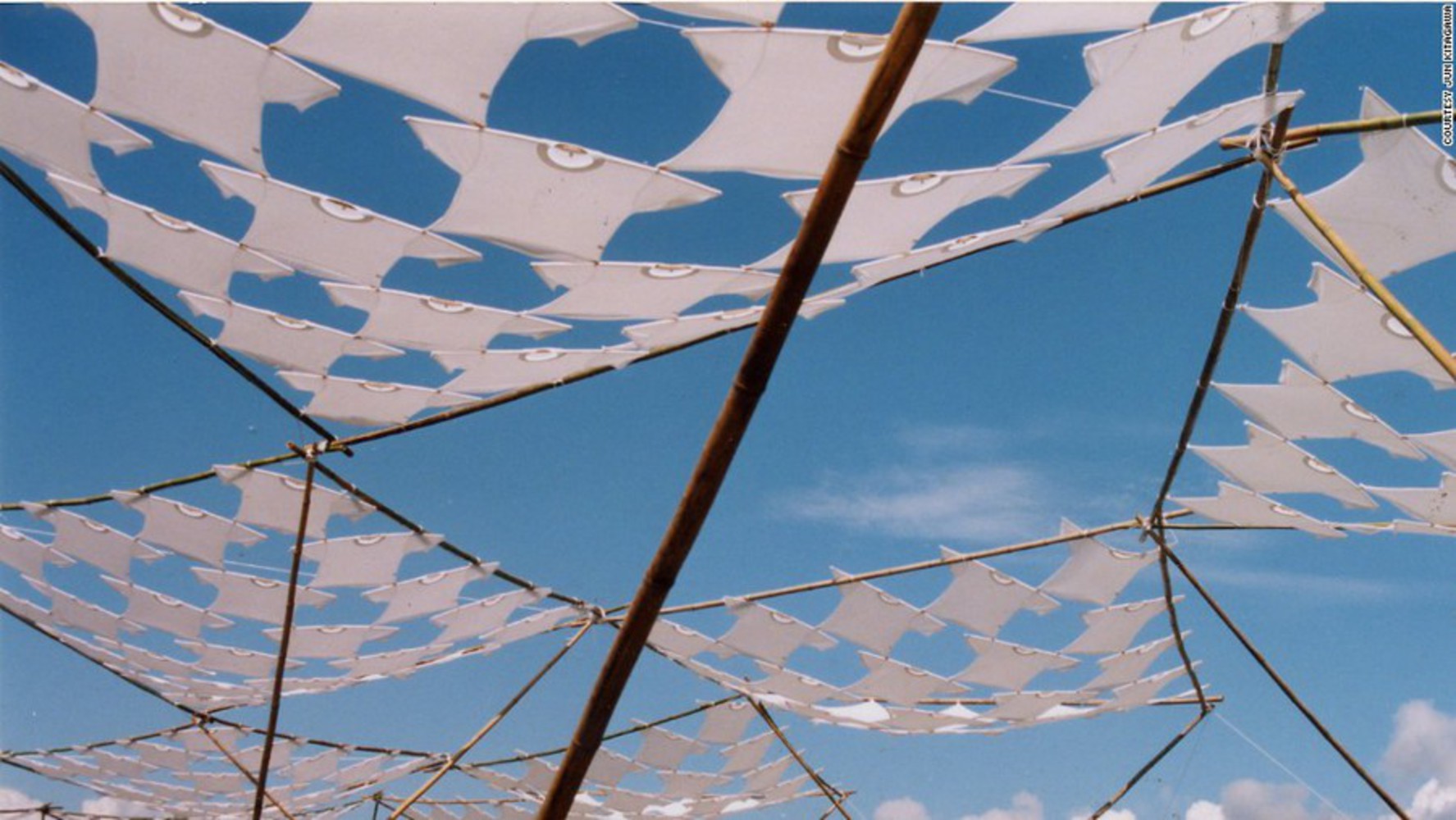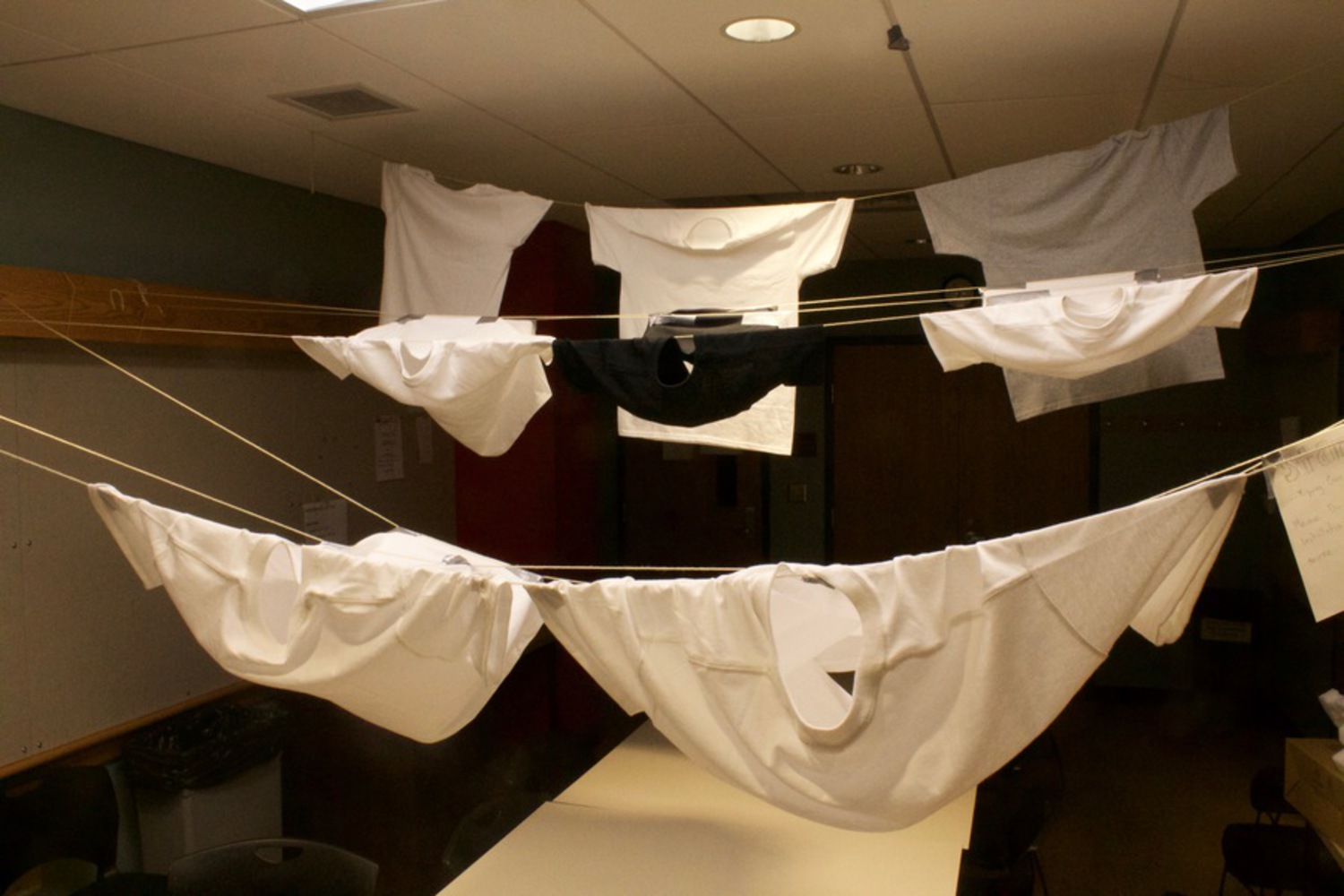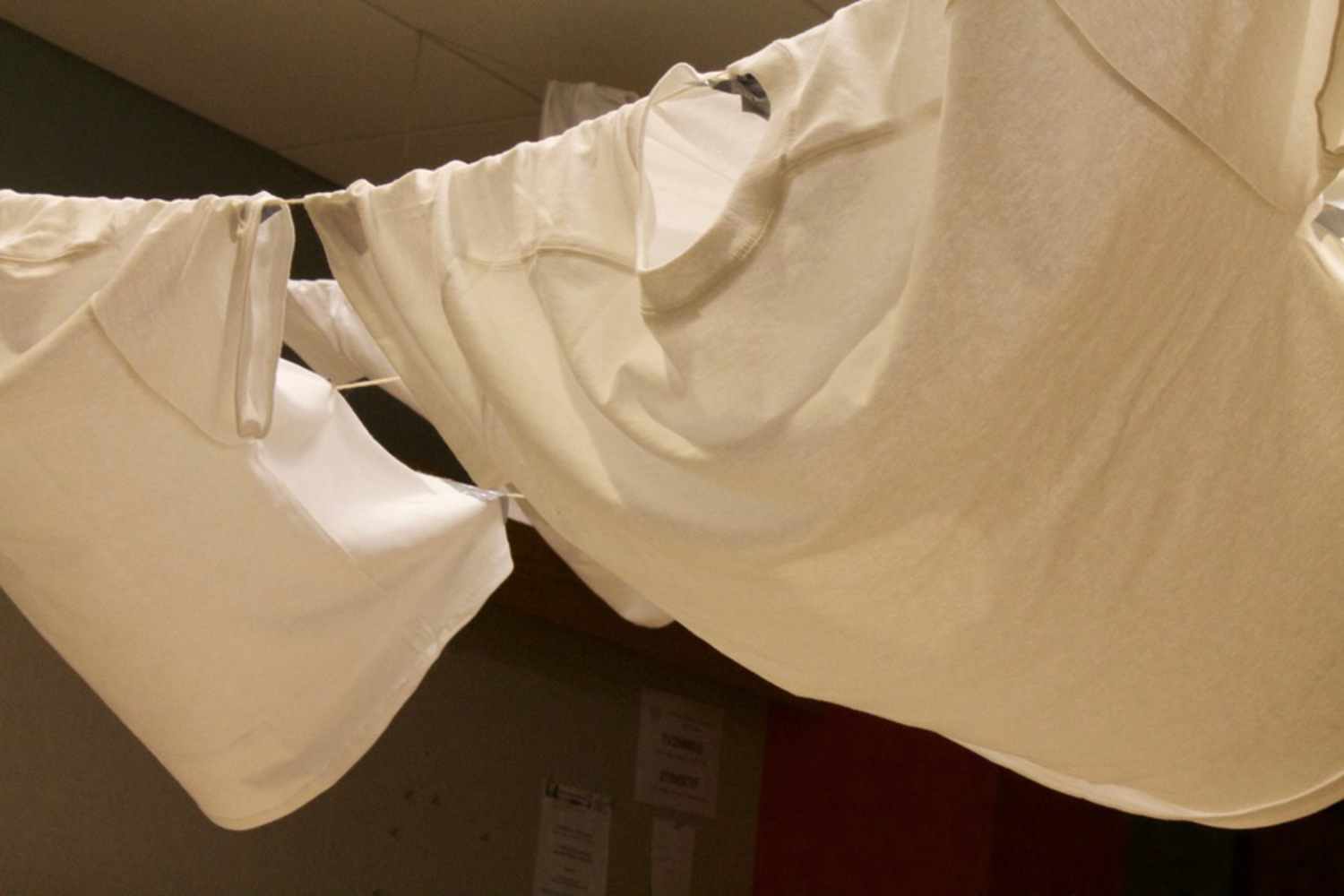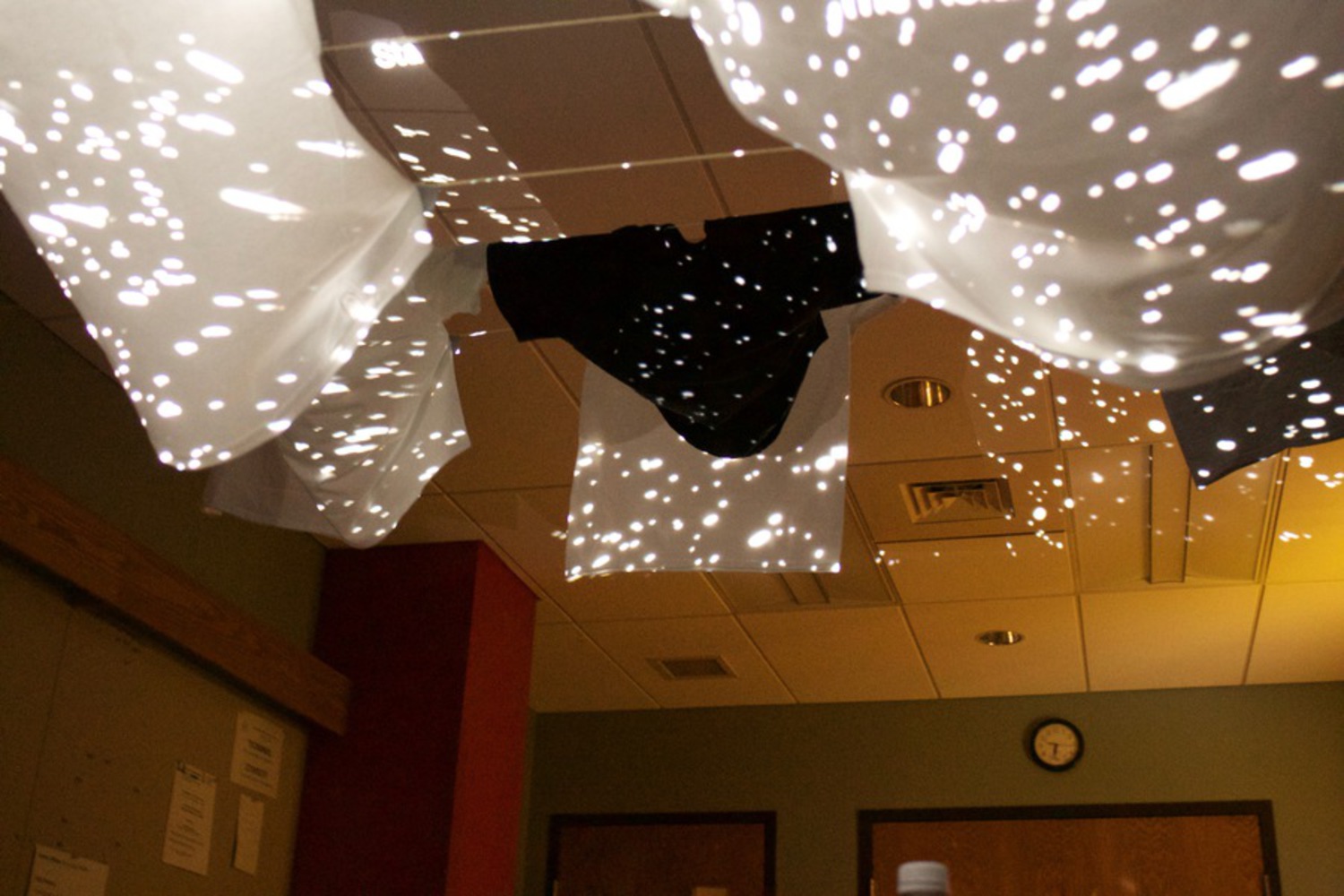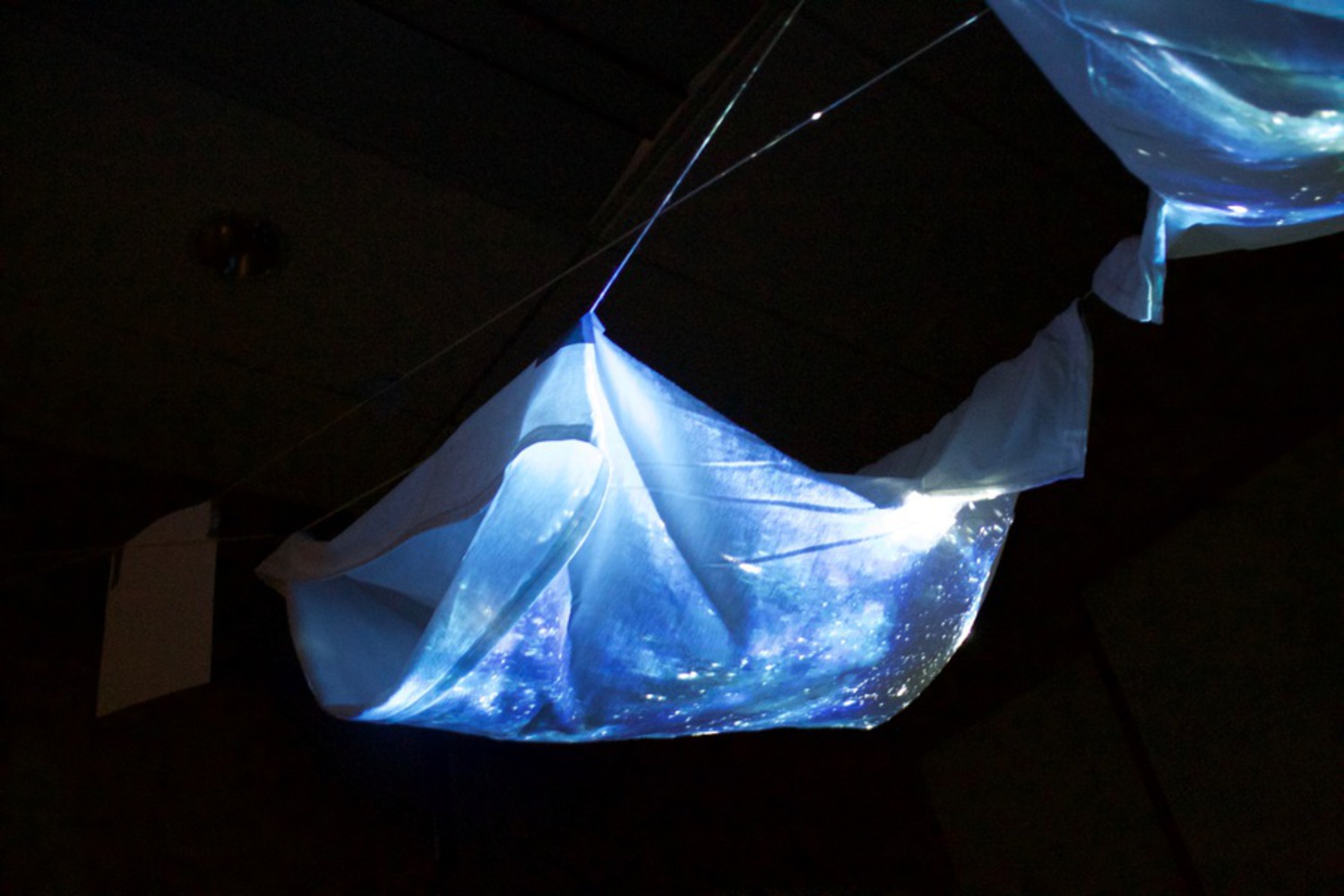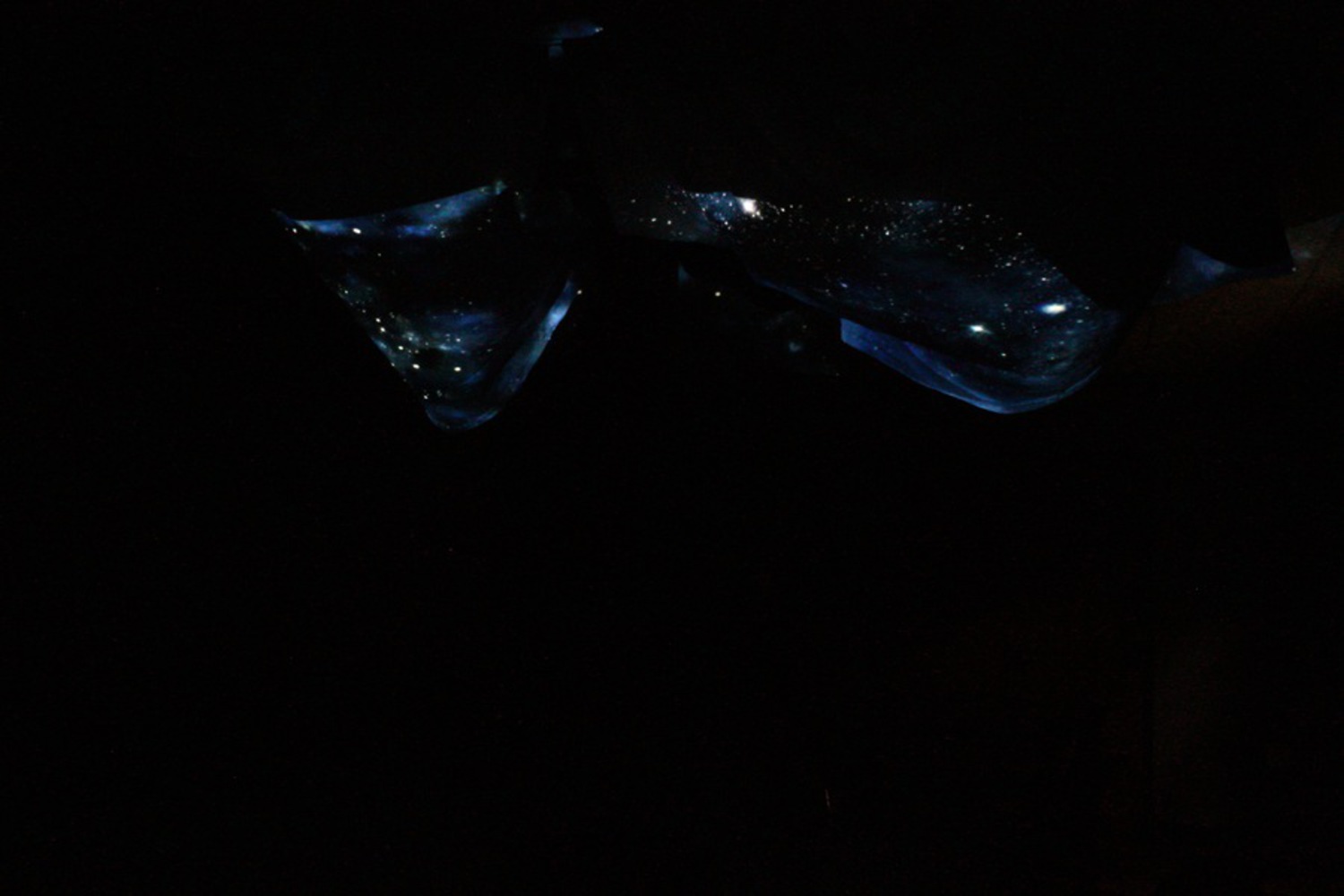Intention
"The cosmos is within us. We are made of star-stuff. We are a way for the universe to know itself." - Carl Sagan
This quote is what inspired our installation. We wanted to show what unites humanity. That we may be very different, but in the end, we are all made of the same "star-stuff".
We were also inspired by our primary constraint of using fabric. We decided to play off fabric's everyday use as material for clothing.
